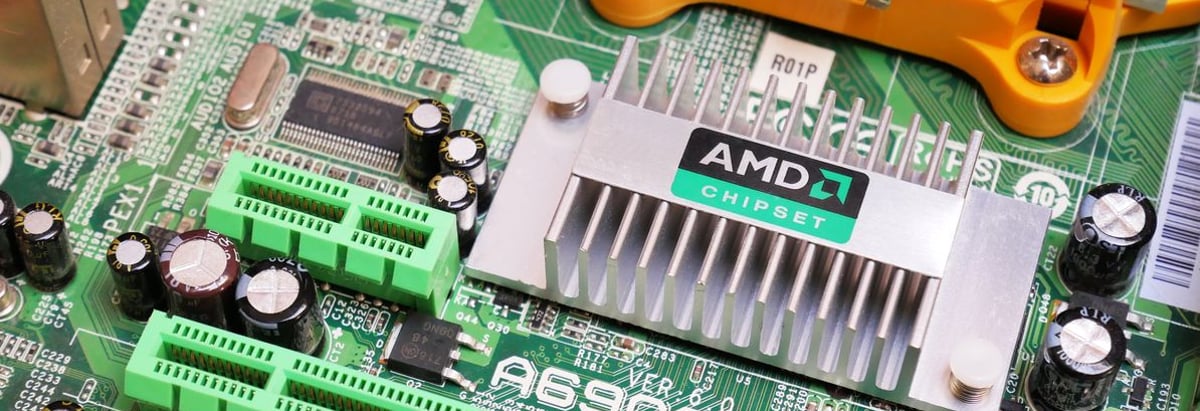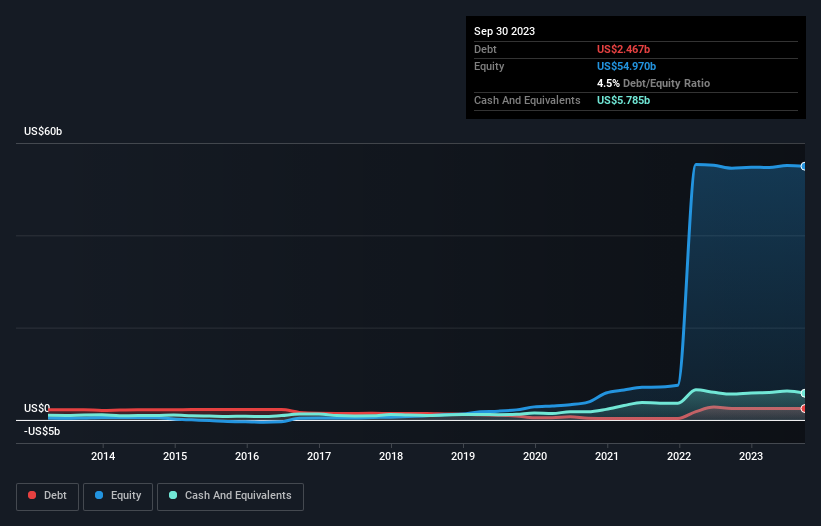- United States
- /
- Semiconductors
- /
- NasdaqGS:AMD
Is Advanced Micro Devices (NASDAQ:AMD) Weighed On By Its Debt Load?

Howard Marks put it nicely when he said that, rather than worrying about share price volatility, 'The possibility of permanent loss is the risk I worry about... and every practical investor I know worries about.' So it might be obvious that you need to consider debt, when you think about how risky any given stock is, because too much debt can sink a company. We can see that Advanced Micro Devices, Inc. (NASDAQ:AMD) does use debt in its business. But should shareholders be worried about its use of debt?
When Is Debt A Problem?
Generally speaking, debt only becomes a real problem when a company can't easily pay it off, either by raising capital or with its own cash flow. Ultimately, if the company can't fulfill its legal obligations to repay debt, shareholders could walk away with nothing. While that is not too common, we often do see indebted companies permanently diluting shareholders because lenders force them to raise capital at a distressed price. Of course, the upside of debt is that it often represents cheap capital, especially when it replaces dilution in a company with the ability to reinvest at high rates of return. The first thing to do when considering how much debt a business uses is to look at its cash and debt together.
Check out our latest analysis for Advanced Micro Devices
What Is Advanced Micro Devices's Debt?
The chart below, which you can click on for greater detail, shows that Advanced Micro Devices had US$2.47b in debt in September 2023; about the same as the year before. But it also has US$5.79b in cash to offset that, meaning it has US$3.32b net cash.

How Healthy Is Advanced Micro Devices' Balance Sheet?
According to the last reported balance sheet, Advanced Micro Devices had liabilities of US$7.63b due within 12 months, and liabilities of US$5.03b due beyond 12 months. Offsetting this, it had US$5.79b in cash and US$5.06b in receivables that were due within 12 months. So its liabilities total US$1.82b more than the combination of its cash and short-term receivables.
This state of affairs indicates that Advanced Micro Devices' balance sheet looks quite solid, as its total liabilities are just about equal to its liquid assets. So it's very unlikely that the US$236.8b company is short on cash, but still worth keeping an eye on the balance sheet. Despite its noteworthy liabilities, Advanced Micro Devices boasts net cash, so it's fair to say it does not have a heavy debt load! The balance sheet is clearly the area to focus on when you are analysing debt. But it is future earnings, more than anything, that will determine Advanced Micro Devices's ability to maintain a healthy balance sheet going forward. So if you want to see what the professionals think, you might find this free report on analyst profit forecasts to be interesting.
Over 12 months, Advanced Micro Devices made a loss at the EBIT level, and saw its revenue drop to US$22b, which is a fall of 3.3%. That's not what we would hope to see.
So How Risky Is Advanced Micro Devices?
Although Advanced Micro Devices had an earnings before interest and tax (EBIT) loss over the last twelve months, it made a statutory profit of US$208m. So taking that on face value, and considering the cash, we don't think its very risky in the near term. Until we see some positive EBIT, we're a bit cautious of the stock, not least because of the rather modest revenue growth. When analysing debt levels, the balance sheet is the obvious place to start. However, not all investment risk resides within the balance sheet - far from it. For instance, we've identified 3 warning signs for Advanced Micro Devices that you should be aware of.
If you're interested in investing in businesses that can grow profits without the burden of debt, then check out this free list of growing businesses that have net cash on the balance sheet.
New: Manage All Your Stock Portfolios in One Place
We've created the ultimate portfolio companion for stock investors, and it's free.
• Connect an unlimited number of Portfolios and see your total in one currency
• Be alerted to new Warning Signs or Risks via email or mobile
• Track the Fair Value of your stocks
Have feedback on this article? Concerned about the content? Get in touch with us directly. Alternatively, email editorial-team (at) simplywallst.com.
This article by Simply Wall St is general in nature. We provide commentary based on historical data and analyst forecasts only using an unbiased methodology and our articles are not intended to be financial advice. It does not constitute a recommendation to buy or sell any stock, and does not take account of your objectives, or your financial situation. We aim to bring you long-term focused analysis driven by fundamental data. Note that our analysis may not factor in the latest price-sensitive company announcements or qualitative material. Simply Wall St has no position in any stocks mentioned.
About NasdaqGS:AMD
Flawless balance sheet with reasonable growth potential.


